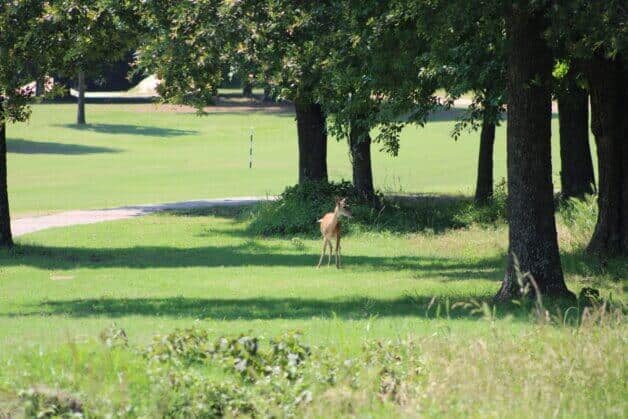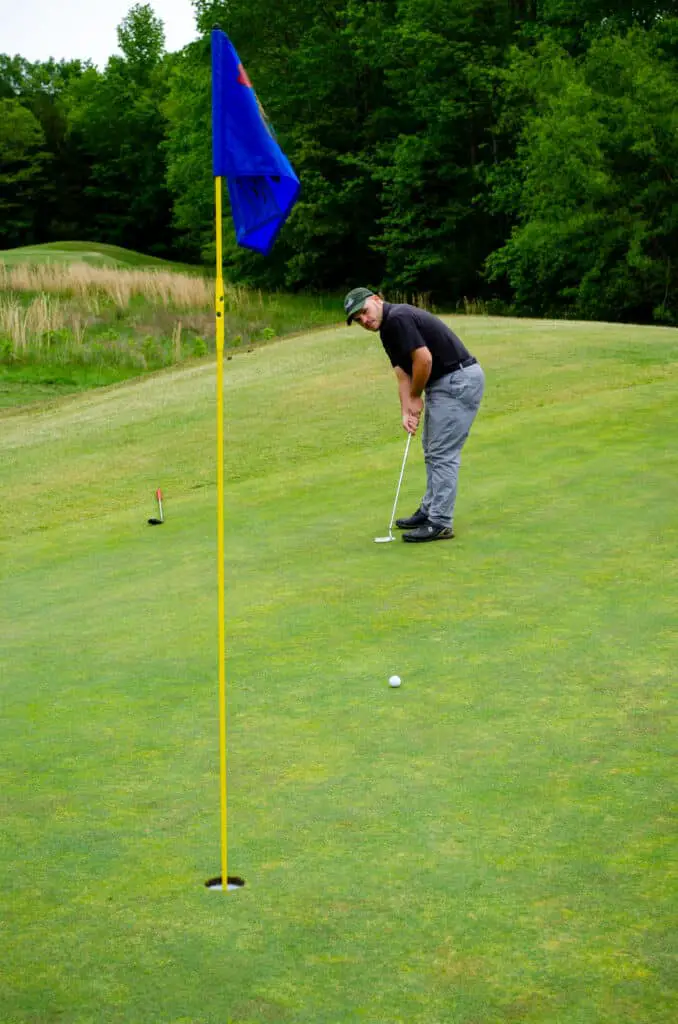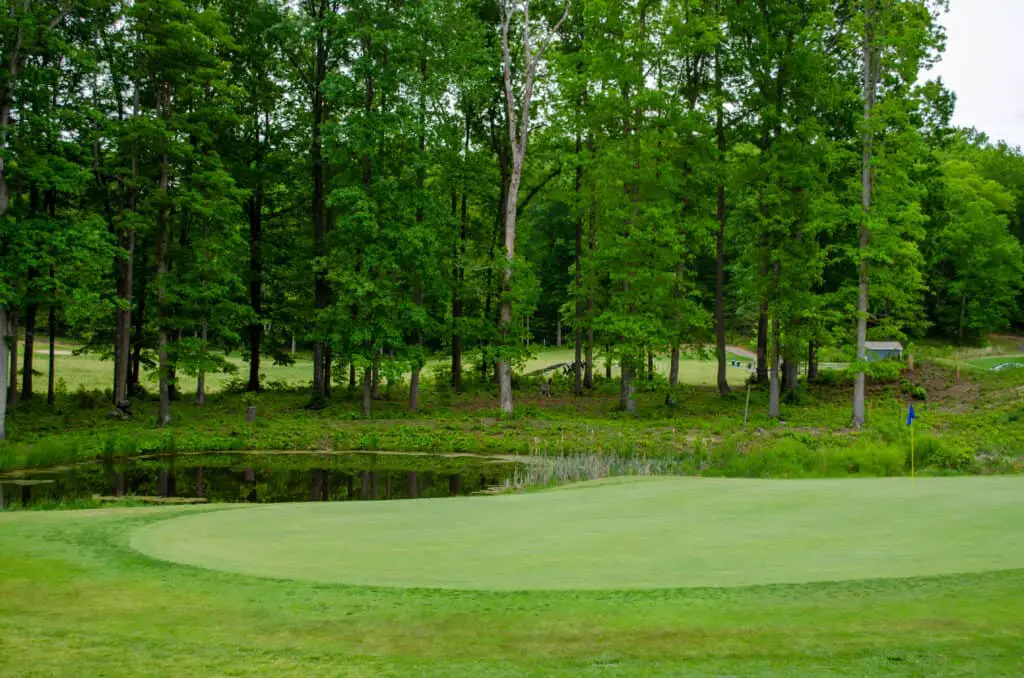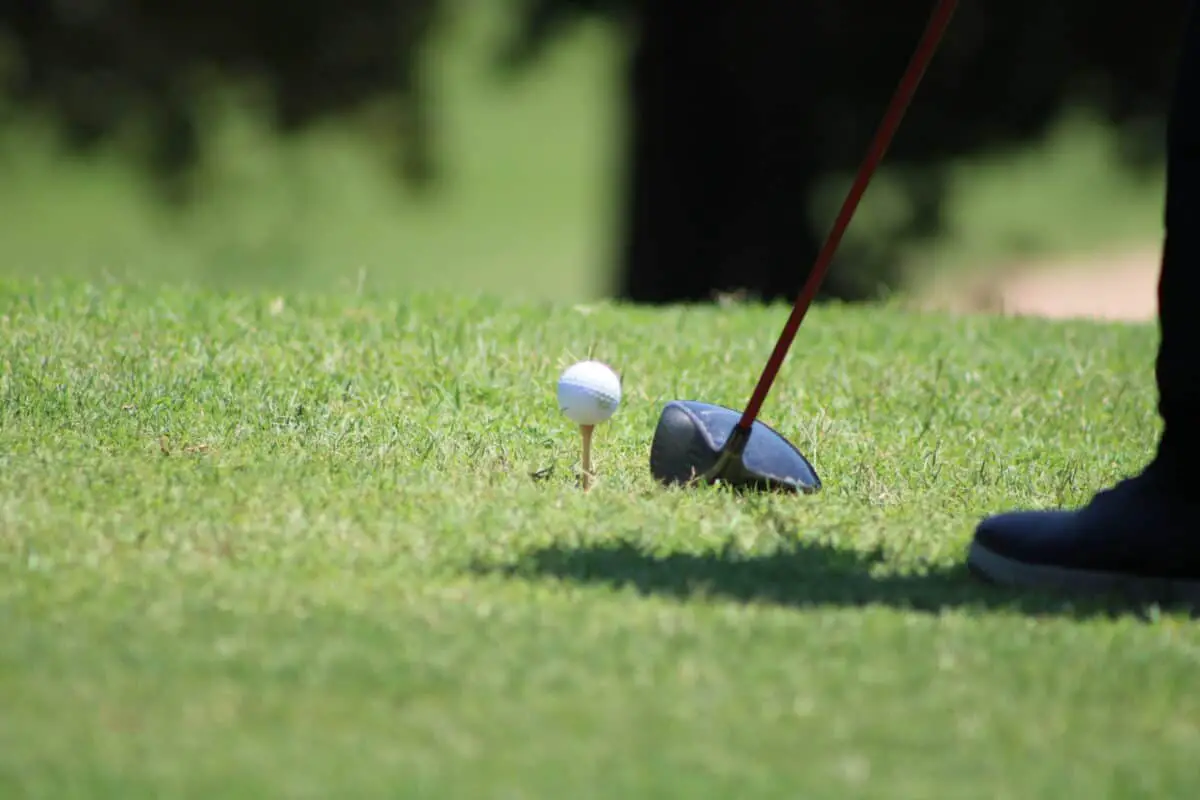A scratch golfer is one who is able to shoot scores around par. More technically it is a golfer who is able to shoot scores around the course rating of each course they play. Like me. 🙂 I have been a scratch golfer for the last 25 years and currently play slightly better than scratch.
Golf is a fascinating and rewarding sport in which participants play against others and themselves. One of the most popular goals for accomplished amateur golfers is to become a “scratch golfer.” This term can have a few different meanings, including an official meaning established by the United States Golf Association (USGA).
After the classes and basic knowledge about swing and body movement, it is time to apply for the federative license in the chosen club. In this instance, you are ready to go into either the short courses or challenge yourself to the 18 holes.
Let’s discuss what determines whether a player is a Scratch golfer or not.
Scratch Golfer Definition
To speak of a scratch golfer refers to the amateur athlete whose beginner times have ended and who has reached a higher level in the game. In the general usage of the term, a scratch golfer is a golfer who shoots typically at par or better, that is, a golfer with a handicap of 0 or less.
Scratch is a shortened term, usually used by golfers when they speak of handicap. For example: “What is his handicap?” “It’s a zero” or “plays from scratch.” This explains that a player with a handicap of 0 is a scratch.
Let’s discuss definitions of some of the associated terms to clarify what it means to be a scratch golfer.

What is a Handicap?
You must have noticed the notion of ‘handicap’ on each hole, in addition to the PAR and the length. At this level, it means a classification of the 18 holes in order of difficulty. HCP 1 being the hole considered the hardest and HCP 18 considered the easiest.
A golfer’s handicap, regardless of if they are a lady, senior, or male golfer, measures his skill level and can be used to level the playing field among golfers of all handling. Golfers with a handicap of 10 are less skilled than golfers with a handicap of 5. Specifically, that player will be 5 strokes better on a typical course of 18 holes. A scratch golfer has a handicap of 0 on all rated golf courses.
The handicap management method developed in 2000 makes it possible to calculate the index (formerly called handicap) about additional parameters reflecting the difficulties of the courses, the Slope and the SSS.
Slope
The Slope determines the difference in the course’s difficulty encountered by players regardless of their level; for example, a scratch player (with an index 0) or a bogey player (whose index is around 18). The Slope is an indicator of difficulty for two categories of players and not the course’s difficulty.
A number (between 55 and 155) determines the difference in difficulty encountered by a player called “scratch,” i.e., with a handicap of ‘0’. “Indicator” is indicative of the difficulty of the course, according to well-defined criteria (narrowness of the fairway, water feature, bunker in play, etc.).
This calibration aimed to be more “fair” as to the performance of golfers on golf courses of different difficulty. The average Slope is 113. A larger slope means that the course will be more complex than the average; a lower slope, therefore, means that the course will be less challenging than the medium.
SSS
The SSS (Scratch Score Standard) measures the difficulty of the course for a scratch player. This “indicator” considers the course’s difficulty, just like the SLOPE, but this time for a “scratch golfer”. For example, a bunker located 240 meters from the start may pose a difficulty for a scratch golfer, while a more modest player will not have this problem.
If the SSS is lower than Par, the course is considered easy for a scratch golfer, while if the SSS is higher than Par, the course is considered difficult. Attribution of the theoretical number of strokes needed to get from the tee to the back of the hole depends quite simply on a very precise rule:
For Gentlemen:
- Up to 228 meters it is a PAR3
- Between 229 and 434 meters it is a PAR4
- From 435 meters and beyond it is a PAR5
For the Ladies:
- Up to 183 meters it is a PAR3
- Between 184 and 366 meters it is a PAR4
- From 367 meters and beyond, it is a PAR5
Slope and SSS are developed after a complete calibration of the terrain. This work is done hole by hole, whether for a scratch golfer or a bogey player and grouped into 11 categories: from the actual length of the game, the topography of the hole, the width of the fairway, the height of the rough, etc. up to the psychological impact of the hole depending on the difficulties it presents.
The holes of a golf course are calibrated in order of difficulty by a number which is the HCP (Course Handicap), located from 1 to 18. The hole with the HCP is 1 is the most difficult. The one with the HCP 18 is the easiest. The HCPs are shown on the golf scorecards. The hole with an HCP of 1 will have more hits received.

Understand the Golf Ranking
Since spring 2020, a new calculation method has been implemented for the index, the WHS (World Handicap System), created jointly by two global representative bodies, the USGA (United States Golf Association) and R&A (Royal and Ancient), with the introduction of the notion of LEVEL.
Thanks to the WHS, the index calculation will be based on the average of the 8 best scores. It will best reflect the current level of play. The necessary data will be the SSS and the Slope to set up the game calculator.

Thus, to answer the question ‘what does it mean to be a scratch golfer,’ and to calculate your handicap, you need the following information:
- The Par of the Course on which you play your competition
- The SSS of the Course (If the SSS is less than par, the course will then be considered easy and vice versa)
- The Slope of the Course (the average being 113).
- Your initial Handicap (Index)
Thanks to these 4 data, you will be able to calculate your index. The Formula to apply is as follows:
(Index x Slope) / 113 + (SSS – Par)
These hits received will be distributed according to the table of hits received during the course, making it possible to place the hits received in priority on the most difficult holes.
From now on, with the WHS, an adjustment of the scores will be applied according to the playing conditions, the SSS and the Slope.
After each of your competitions, your index is recalculated. Before 2020 your index evolved by + or – 0.1 points or not at all. Since January 2020, the new calculation of your index, the WHS, calculates your new index after each competition.
Is a Scratch Golfer a Pro?
While it is true that becoming a scratch golfer is the goal of many players as a Scratch is capable of playing Par on all holes of an 18-hole course, they are not pro golfers. When an amateur becomes a scratch golfer, it means their beginner times have ended. It does not mean shooting Par every time, but around Par (they may shoot lower or higher), regardless of the course. This also answers one of the most frequently asked questions: What does a scratch golfer shoot?
For example, if you shoot scores of 72, 74, 70, 68, 76, in a course, the rating is 72, you will be considered right around a scratch golfer. Being a scratch golfer does not mean shooting part every time, but on average, the scratch golfer will be able to shoot right around Par (sometimes lower, sometimes higher) on the majority of the rounds, regardless of the course.
They especially tend to shot low scores when they have their wedge distances dialed in and are able to hit accurate shots into the greens.

In other words, a Scratch golfer is mainly close to the course rating, whereas a pro golfer is the one shooting between 4 to 6 shots better on average than a Scratch. It can be further explained as follows:
- A Pro golfer’s golf ball would hit 3% more greens in regulation (GIR) than a scratch golfer. GIR is when you hit the green in two strokes less than par. In a single round, it is only ½ a hole, but over a 4 round course, it is equal to 2 total greens. Although the difference seems minor, it adds up.
- Likewise, if we talk about fairways for the same ranked pro golfer as discussed above, it must be 13% more fairways than a scratch golfer; that is, around 2.3 more fairways per round and approximately 10 for a tournament.
- In terms of Putts Per Hour, the difference is very slight and is often misled if the number of greens in regulation being hit is not considered.
- In the scrambling category, a pro golfer saves Par 9% more than an average Scratch. The difference is not significant, and in a tournament of 4 rounds, it will be the difference of 2 strokes.
The above differences explain why a Scratch golfer is not a Pro. The latter is much better, so if you’ve become a Scratch golfer, there is still a way to become a pro and head out to tours, even the mini ones. However, remember that you are headed towards becoming a pro.
What Percentage of Golfers are Scratch?
According to the USGA, there were approximately 40,000 Scratch golfers at the end of 2020. This number makes up 1.6% of the total golfers. The male golfers who are scratch or better are 1.85%, while women have a percentage of 0.69%.
What about golfers who do not have an official handicap index? There is no way to know for sure, but it can be said that their percentages are even lower. After all, if you’re really good, wouldn’t you want everyone to know that? (Something else you can confidently say about handicap recreational golfers: There are far fewer scratching golfers than they claim to be.) But, if you find yourself competing with a zero or better index, then you know you’re against one of the best golfers.
Final Thoughts!
We hope this article has answered, ‘what is a scratch golfer,’ and how you can become one. In simple words, you are a Scratch if you can play zero or better on any golf course. In simple words, if you can play Par on all holes of an 18-hole course, you’re a Scratch golfer. Share this information with your family and friends who have just started playing this game and help them understand some of the most used terms in golf.
Scratch Golfer FAQ’s
How many shots do scratch golfers typically hit?
Scratch golfers can hit between 5-17 shots above or below par on any given round. This is because even the best golfers can have bad shots or face challenging weather conditions that can affect their performance. However, scratch golfers are generally more consistent and capable of playing at a high level compared to the average golfer.
Can female golfers become scratch golfers?
Yes, female golfers can become scratch golfers, with an average of 1-2 female scratch golfers per golf course. Women’s golf has grown in popularity over the years and there are many talented female golfers who have achieved scratch golfer status. However, the number of female scratch golfers is still relatively low compared to male golfers.
How is a golf course rated for scratch golfers?
All rated golf courses have a scratch line, which is the score that a scratch golfer is expected to achieve on that course. The scratch line is used to rate the difficulty of the course for scratch golfers and is based on factors such as the course’s length, layout, and hazards. This rating system is used for handicap index and rating purposes.
How can someone become a scratch golfer?
Becoming a scratch golfer requires a combination of natural ability, playing ability, and a positive attitude. It takes a lot of practice and dedication to reach scratch golfer status. A golfer can improve their playing ability by taking lessons from a professional, practicing regularly, and playing in amateur events. Additionally, having a positive attitude and a head start in golf can also be helpful in achieving scratch golfer status. However, it is important to note that becoming a scratch golfer is an extremely difficult feat and only a small percentage of amateur players ever achieve this ultimate goal.
- Should Tee Boxes Be Level? - January 23, 2024
- 3 Hybrid Distance - November 15, 2023
- Innovations in Golf Mobility: An In-depth Review of Top Golf Scooters - October 12, 2023
